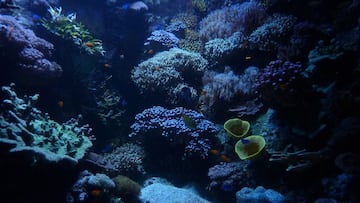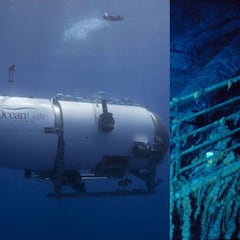What is in the hadal zone, the deepest part of the ocean?
The hadal zone is one of the most dangerous places on the planet. Learn more about the deepest part of the ocean, named after the god of the dead.

The sea has come to the fore in recent weeks with the tragedy of the Titan submersible, which imploded during an expedition to see the remains of the Titanic. The crew members aboard the OceanGate vessel were descending to a depth of more than 12,000 feet to be able to explore what was left of the sunken ocean liner.
The tragic fate of the Titan underscores the great dangers that lie within the depths of the ocean. Its deepest part is known as the hadal zone, which extends from a depth of about 19,700 feet to the bottom of the deepest trenches. It is perilous to descend to this place, which is characterized by a total absence of light.
READ ALSO: Titan debris brought ashore: in pictures
What is the hadal zone?
The hadal zone is the part of the ocean that lies below the abyssal zone, which ranges from 13,000 to 19,700 feet. The environment has such a low temperature and its pressure is so great that it prevents anything from being visible in the area.
This space, which can reach depths of 32,000 feet, is characterized by marine trenches and has a very low concentration of nutrients. The origin of its word is found in a French term, which means “place of death”. The hadal zone includes the deepest oceanic trenches, such as the Mariana Trench (the deepest point on Earth), the Tonga Trench, and the Kermadec Trench.
READ ALSO: The dangerous jobs of saturation divers in the cold deep sea
What animals can be found in the hadal zone?
As there is a complete absence of light, many life forms would not survive in the area. However, there is still room for life in this part of the ocean. There are a few hadal or hadolpelagic species that can be found in this place, which meet a series of very specific characteristics in order to survive in one of the most inhospitable places on Earth. According to Green Ecology, they can develop the following qualities:
- Tactile tabs
- The mastery of dark colors
- Large, telescopic eyes
- Bioluminescent Organs
Related stories
This is why the species that can survive in these types of places are not common, like dumbo octopuses, rat fish, and ophiurus, a kind of brittle star. Likewise, you can also find what are known as marine amphipods or small crustaceans.
Are there plants in the hadal zone?
There are no plants within the hadal zone due to the absence of light. This makes it impossible for photosynthesis to take place, and this process is vital for the correct development of a plant.

